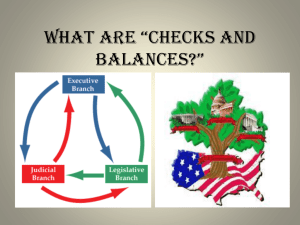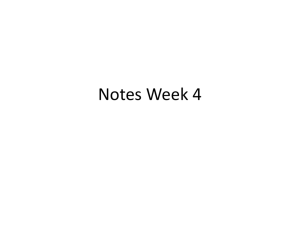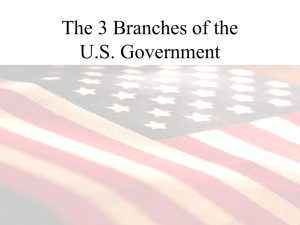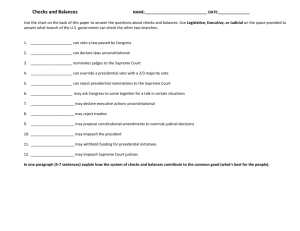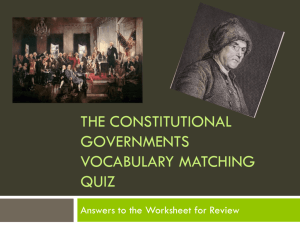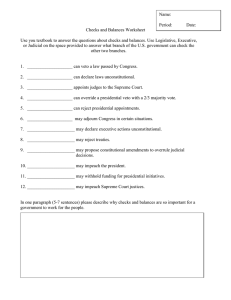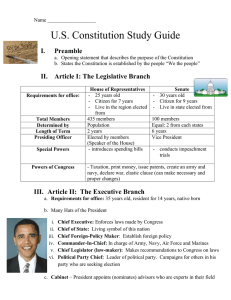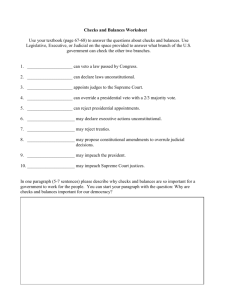Checks & Balances in Government
advertisement
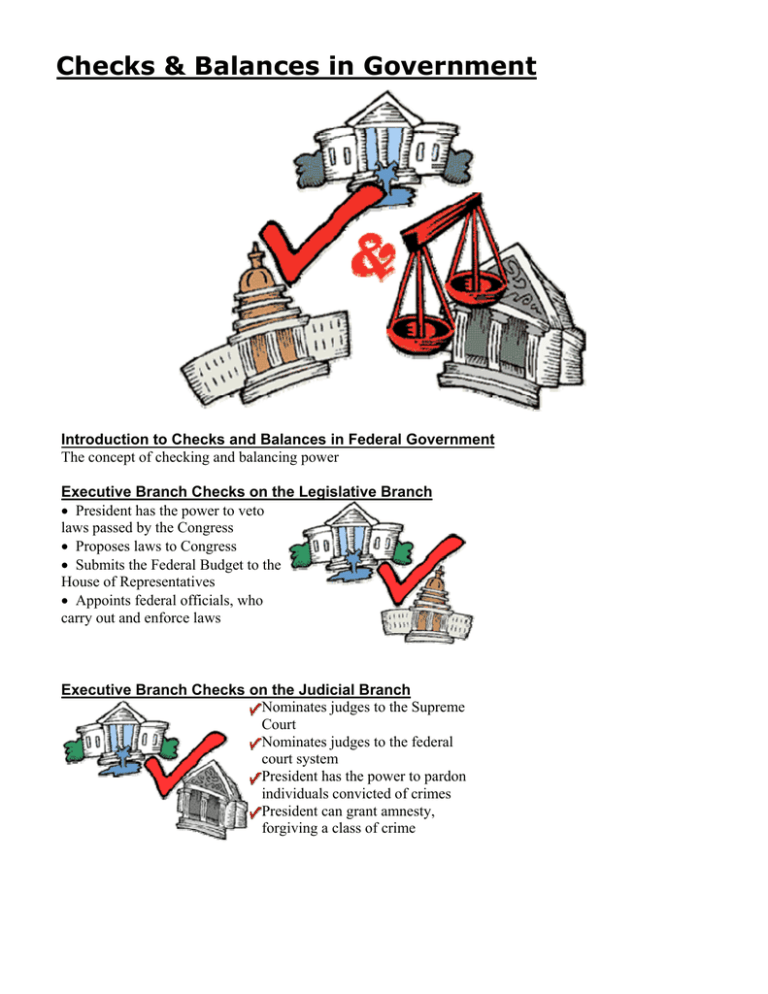
Checks & Balances in Government Introduction to Checks and Balances in Federal Government The concept of checking and balancing power Executive Branch Checks on the Legislative Branch • President has the power to veto laws passed by the Congress • Proposes laws to Congress • Submits the Federal Budget to the House of Representatives • Appoints federal officials, who carry out and enforce laws Executive Branch Checks on the Judicial Branch Nominates judges to the Supreme Court Nominates judges to the federal court system President has the power to pardon individuals convicted of crimes President can grant amnesty, forgiving a class of crime Legislative Branch Checks on the Executive Branch • Congress can overturn a Presidential veto with a 2/3 vote of both houses • Senate can reject proposed treaties (2/3 vote to approve) • Senate can reject presidential nominations of federal officials or judges • Congress can impeach and remove the President (House serves as prosecution, Senate serves as jury) Legislative Branch Checks on the Judicial Branch Congress can create lower courts Senate can reject nominees to the federal courts/Supreme Court Congress can amend the Constitution to overturn decisions of the Supreme Court Congress can impeach judges and remove from the bench Judicial Branch Checks on the Executive Branch • Supreme Court can use the power of judicial review to rule laws unconstitutional Judicial Branch Checks on the Legislative Branch Supreme Court can use the power of judicial review to rule presidential actions unconstitutional Supreme Court can use the power of judicial review to rule treaties unconstitutional
